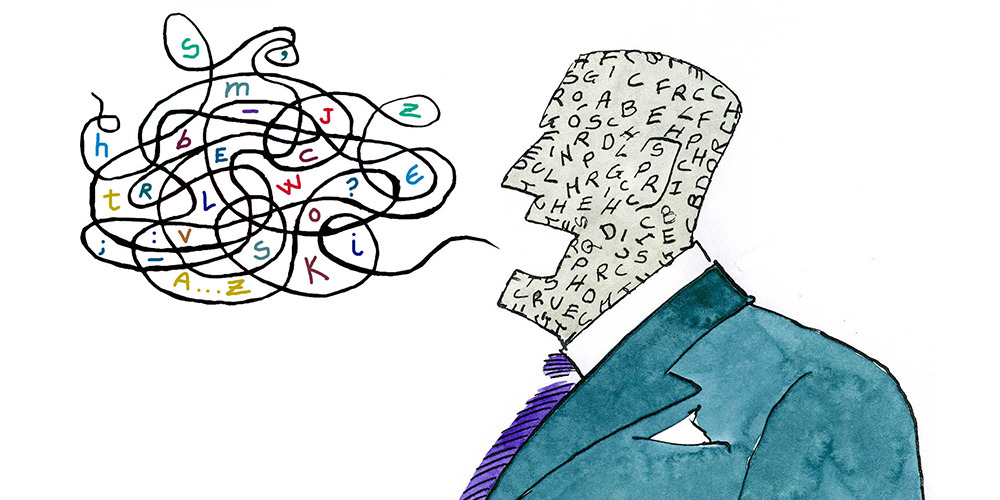The Federal Open Market Committee blackout period has mercifully spared the public from the cacophony of Fed-speak for nearly two blissful weeks.
US Federal Reserve communications seem increasingly to have an insider, esoteric quality – one reflecting legitimate technical debate, but also bound to confuse and perturb the public. Ahead of the blackout period, seemingly all board members and regional presidents offer speeches, tilting in a hawkish or dovish direction in nuanced monetary policy jargon.
On FOMC decision day, the committee’s statement is brief and perhaps only a few code words are changed. Immediately, focus shifts to Chair Jerome Powell’s press conference with its unscripted question and answer session, which trounces the committee’s work and statement.
There, the media plays its cat-and-mouse game, asking technical, dry, repetitive questions aimed not at helping the public understand the pulse of the economy, but at sussing out whether or when the Fed may raise, cut or hold rates.
Markets at times don’t respond to the press conference in ways the chair or FOMC members wish. That this could happen is somewhat surprising given the scores of talented New York Fed employees who spend their entire day attuned to market sentiment. Then, FOMC members quickly fan out if needed to set the record straight for markets or put their own spin on the committee meeting.
Crossed wires on inflation
The Fed, as others, somewhat missed the boat on its post-pandemic transitory versus persistent inflation predictions, betting on a recession that has yet to happen. So it now understandably reverts to ‘data dependence’. But with so many indicators, data have the shelf life of a nanosecond and markets jump at every squiggle. None of this may be readily comprehensible to the public.
Another favourite Fed-speak topic is R* – the real neutral rate of inflation. Though it is an important theoretical concept, it is unobservable. Nobody can agree what R* is or even if it’s going up or down. Meanwhile, the dot plot – the height of the arcane, incomprehensible to the public and baffling even experts – sees a long-term Fed Funds rate of 2.5% versus personal consumer expenditures core inflation of 2%. Perhaps at least all can agree that R* is higher than 0.5%?
Simply put, R* isn’t a useful tool to explain monetary policy to the public. How does it play on Main Street?
That relates to financial conditions. At press conferences, Powell suggests that financial conditions are restrictive. But even this point has unleashed a confusing – and important – debate among monetary experts. The Chicago Fed’s Financial Conditions Index seems quite lax (Figure 1), while the Fed board’s new FCI skews fairly neutral in its monetary policy settings (Figure 2). How can the public make heads or tails of whether financial conditions are restrictive?
Figure 1. Financial conditions are lax compared to previous years
Year-on-year NFCI data

Source: Federal Reserve
Figure 2. Monetary policy is fairly neutral
Financial conditions impulse on growth (positive = headwinds; negative = tailwinds)

Source: Federal Reserve
Despite different views in the FOMC, the Committee’s votes these days are seemingly unanimous. Has anybody ever been on a committee without dissensions – especially now that rates are seemingly at an inflection point?
The Fed clearly hasn’t reached its price stability target of 2% and sticky inflation has generated enormous discussion of the ‘last mile’. But in the endless speeches about the monetary policy outlook, key messages for the public are lost.
First, as is only now being discussed, there is a difference between the level of prices reflecting past inflation versus the current rate of inflation.
Second, though there are a wide range of inflation measures – which is confusing in and of itself – one can roughly say (as economist Jason Furman has) that inflation is around 2.5% to 3%.
Finally, in focusing on the inability to quickly revert to target, the public doesn’t hear the message from the Fed or the media that 2.5% to 3% inflation (versus 2%) is not going to disrupt economic or financial behaviour. Many respectable economists believe that the inflation target should have been set at 3% to start with. Instead, one seemingly only hears the Fed has failed, further stoking public inflation anxieties.
Powell often says that, ‘price stability is the responsibility of the Federal Reserve.’ But the Fed gives the public a wrong steer in acting as if it solely can deliver price stability. Other factors well beyond its control impact price stability, such as commodity prices, global supply developments and especially fiscal policy. Refusing to speak about this latter topic has tremendous implications for financial markets and stability and is consequential for the Fed’s standing and ability to do its job.
When Powell is interviewed by mainstream media (such as ‘60 Minutes’), he performs an invaluable and commendable public service in speaking to Americans. But for the most part, Fed-speak is increasingly niche and arcane pursuit, which falls short on public education.
Mark Sobel is US Chair of OMFIF.

